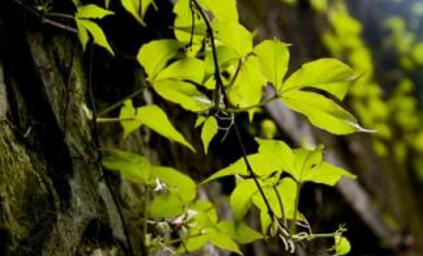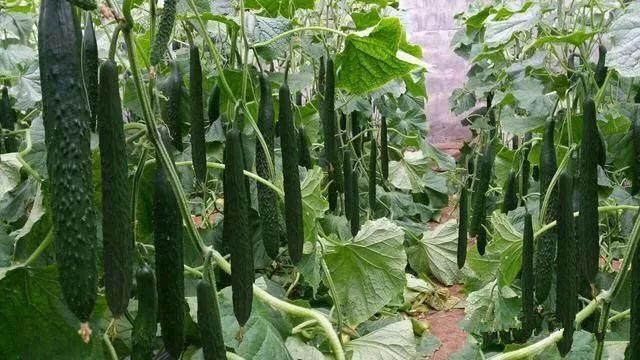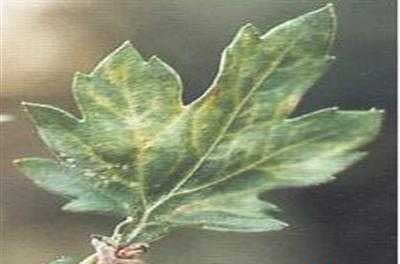Pest control of Parthenocissus parthenocissus
The diseases of Parthenocissus are powdery mildew, leaf spot and anthracnose. Common aphid harm. Parthenocissus parthenocissus due to strong resistance, the occurrence of diseases and insect pests are less, but also occur from time to time, especially in the rainy season, due to high temperature and humidity prone to powdery mildew, leaf spot and anthracnose, when the disease occurs, you can use 50% carbendazim, thiophanate or chlorothalonil 500 times 800 times, spray once every 7 days or so, 2 times in a row. The insect pests are mainly aphids, which can be controlled by chloramphenicol, chlorpromazine, or 500 / 1000 times of cyhalothrin.

Cutting or seedling growth stage may interfere with powdery mildew, it will harm the stems and leaves of Parthenocissus, so that yellow shops appear on the leaves, and then grow a white powdery mildew layer, which will form a large mildew spot in the later stage, hindering the photosynthesis of the leaves and causing the leaves to decline in advance.
Prevention and control methods: when watering, do not water too much, try to water from the edge of the basin, reduce the frequency of watering stems and leaves, apply more phosphorus and potassium fertilizer and less nitrogen fertilizer, strengthen ventilation and reduce humidity. 1000 times solution of 15% trimethoprim was used at the initial stage, and 1000 to 1500 times of which 10% polyantimycin solution was used in the later stage.
2. Leaf spot
The main cause of the disease is that the density of the upper branches and leaves of the plant is too high, the environmental humidity is too much and the ventilation is poor. The symptom is that there are round disease spots on the leaves of Parthenocissus parthenocissus, then become irregular shape, brown disease spots appear on the stems and petioles, and finally the leaves wither and curl.
Prevention and treatment: remove the diseased leaves, reduce the spraying of plants, and prune the branches and leaves to increase light transmittance and good ventilation. 1000-fold solution of 50% topiramate and 80% mancozeb were sprayed at the time of onset.
3. Anthrax
Anthrax is the most harmful disease and pest control of Parthenocissus. It will cause brown disease spots on leaf tip and leaf edge, affect the growth of its tendrils, lead to poor growth, and there will be small black spots on the disease spots. One of the causes is that the temperature is too high.
Prevention and control methods: usually pay attention to increase the application of phosphorus and potassium fertilizer to improve the disease resistance of Parthenocissus, spray 50% anthrax Fumei wettable powder 800x liquid, can also be sprayed with 1000 times of chlorothalonil, the temperature is too high can be appropriate shading.
4. Aphids
Aphids will use mouthparts to pierce the leaves of Parthenocissus Parthenocissus to suck its juice, causing the injured leaves to turn yellow, fall early, and so on. While sucking, it will also secrete a kind of honeydew, which is not easy to find, but it will attract ants, snails and so on, causing greater damage to plants.
Prevention and control methods: the prevention of aphids is mainly based on prevention, the method is to strengthen daily maintenance and management according to the breeding methods of Parthenocissus, to keep the environment clean, moderate humidity and not too shady, and the treatment method is to spray 50% malathion emulsion 1000-l500.
Control methods of Leaf spot of Parthenocissus paniculata
Parthenocissus is no stranger in our life, and it is often seen in the small courtyard at home, so the leaf spot disease of Parthenocissus is also a high incidence disease. Today, the editor shares with you the prevention and treatment of leaf spot disease of Parthenocissus.
Symptoms of leaf spot disease of Parthenocissus
Small yellow-brown spots appeared on the leaves at the initial stage of the disease, and then expanded into a nearly round spot with a diameter of 3-6 mm. In the later stage, the tissue of the disease spot became light yellow, but the leaf edge was brown, and black spots-conidia were scattered on the disease spot. Can cause Parthenocissus leaves withered and early fall.
The pathogenic fungus of Phyllosticta is Phytophthora. The conidia grow in the conidia and are oval with short gelatinous filaments at one end.
Incidence regularity of leaf spot disease of Parthenocissus paniculata
The leaf spot mold overwintered on the diseased part in the form of mycelium, conidium or ascomycete and became the primary infection source of the disease in the second year. Generally, April is the initial period, and June-August is the high incidence period.
Control methods of Leaf spot of Parthenocissus paniculata
1. It can be sprayed with 1% Bordeaux solution, 50% topiramine wettable powder 1000 times, 50% carbendazim wettable powder 1000 times, 75% chlorothalonil wettable powder 800ml 1000 times.
two。 If the fast spots caused by molds in the leaves of Parthenocissus parthenocissus are small and few, you can use a small needle to pierce the spot (small needles are best disinfected). Then touch the medicinal (Dakening cream) on the leaf spots of Parthenocissus to control the development and prevention of the disease.
These are the methods to control the leaf spot disease of Parthenocissus paniculata.
Extended reading:
Fertilization method, planting method and pest control of Parthenocissus parthenocissus
- Prev

"eight taboos" for High quality and High yield Management of Cucumber in greenhouse in Winter and Spring
"eight taboos" for High quality and High yield Management of Cucumber in greenhouse in Winter and Spring
- Next

What harm does chrysanthemum virus disease have?
Virus disease is an important disease in chrysanthemum cultivation, which is widely distributed. Chrysanthemum virus diseases occur all over China, including chrysanthemum infertility virus, chrysanthemum mosaic disease, chrysanthemum malformation disease and so on. 1. The pathogen of chrysanthemum infertility virus is tomato infertility virus.
Related
- Fuxing push coffee new agricultural production and marketing class: lack of small-scale processing plants
- Jujube rice field leisure farm deep ploughing Yilan for five years to create a space for organic food and play
- Nongyu Farm-A trial of organic papaya for brave women with advanced technology
- Four points for attention in the prevention and control of diseases and insect pests of edible fungi
- How to add nutrient solution to Edible Fungi
- Is there any good way to control edible fungus mites?
- Open Inoculation Technology of Edible Fungi
- Is there any clever way to use fertilizer for edible fungus in winter?
- What agents are used to kill the pathogens of edible fungi in the mushroom shed?
- Rapid drying of Edible Fungi

